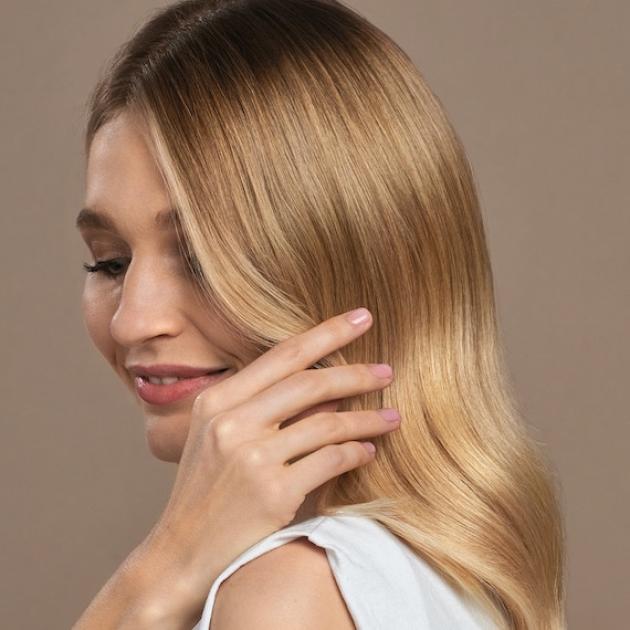How to Fix & Protect Sun-Damaged Hair
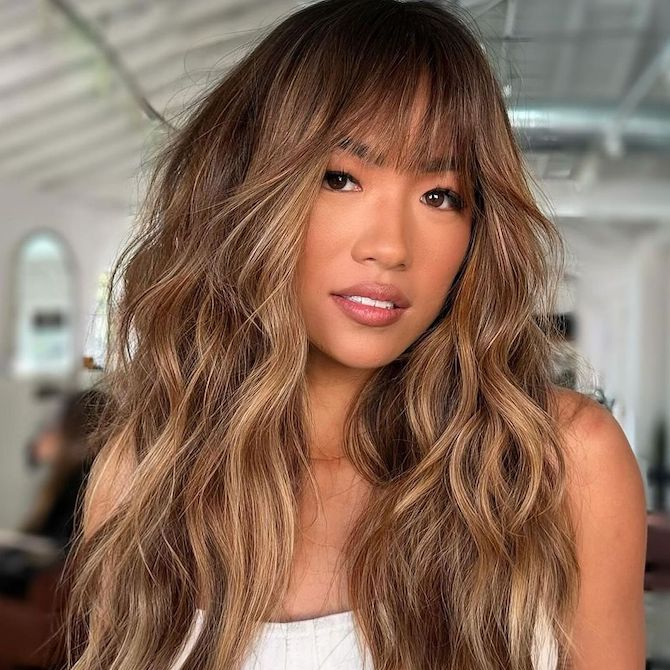
Many of us dream of softly bronzed, tousled locks that embody a tropical getaway, but let's be real: there's a fine line between sun-kissed and sun-damaged hair. Unfortunately, beach days rarely result in the surfer-chic vibe we long for. Instead, strands can be left dry, dull and brassy due to scorching temperatures.
And this doesn’t just happen in the summer months; even in winter, the UV index can soar, leaving hair strands vulnerable to dryness, dullness and hair breakage . So, how do you fix it? Here's your guide to restoring health through sun-scorched hair and keeping it protected in the future. Sun-kissed hair is finally within reach.
What Does Sun-Damaged Hair Look Like?
Is it sun damage, heat damage , friction damage..? While the symptoms of each type of damage are similar, there are some telltale signs that UV rays are putting stress on your hair. Watch out for:
Brittle and Dry Hair
The hair shaft is kept healthy and nourished by natural oils that travel from the roots to the tips, but sun exposure can strip away these oils to leave hair dry and brittle . That's why you might notice locks seem to lack moisture at the end of a sun-soaked vacation. Sea and chlorinated water can also contribute to stressed, straw-like strands.
Hair Breakage and Split Ends
When the sun strips oils away from the outer layer of the hair, it's not just dryness that becomes a problem. Hair strands are also left weak and vulnerable to split ends and breakage. Regular trims can keep some of the hair damage at bay, but added nourishment is needed to bolster the lengths, so it's no longer prone to drying out and snapping off.
Dullness, Colour Fade and Brassiness
Just as the sun changes the pigment in your skin, it can also fade and shift the colour of your hair. But instead of turning it red like a sunburn, it can lighten locks, while pulling out orange or yellow brassy tones . So if your hair colour appears dull or warmer than you’d like, sun damage could be at play. Look out for patches of brassiness in areas that are most often exposed to the sun, like the roots, or the lengths if you tie hair in a topknot.
How to Fix Sun Damage
Repairing Condition After Excessive Sun Exposure
Sun damage leaves your hair weak and dry, which is where a lot of the problems kick in. Strong, healthy hair is better able to bounce back in the face of soaring temperatures. So, to transform stressed strands, you need the right hair products and a proper care routine on your side. Follow these condition-boosting steps to reverse the signs of sun damage...
1. Wash With a Gentle Shampoo
'Gentle yet hard-working' is on the agenda for your perfect shampoo, and ULTIMATE REPAIR Shampoo ticks both boxes. It's ideal for all hair types – including delicate strands that are prone to snapping – with a luxurious lather that leaves locks clean, balanced, and ready to absorb your nourishing conditioners and treatments. It even gets rid of microscopic dust particles, which can rub against hair strands and increase breakage. Plus it's colour-safe, so hair is protected against shade fade.
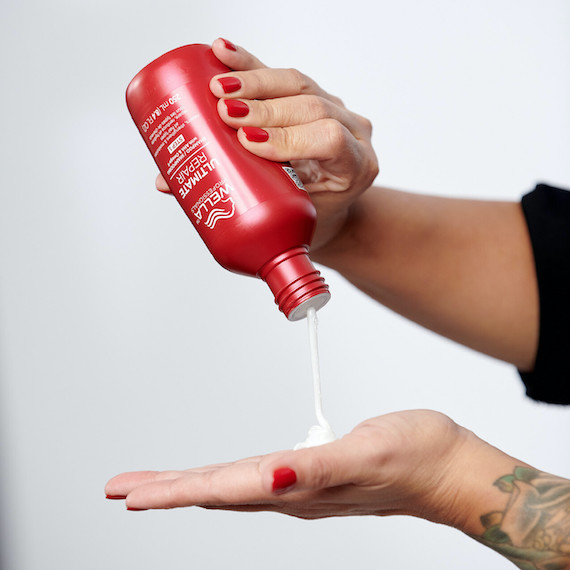

2. Use Reparative Conditioners and Masks
To keep hair strong, follow up ULTIMATE REPAIR Shampoo with ULTIMATE REPAIR Conditioner , an ultra-creamy moisturiser that boosts the hair repair process from the inside out. Use it as your regular conditioner, and then apply a hair mask weekly. ULTIMATE REPAIR Mask harnesses smart conditioning agents that detect and treat the most damaged sections of hair.

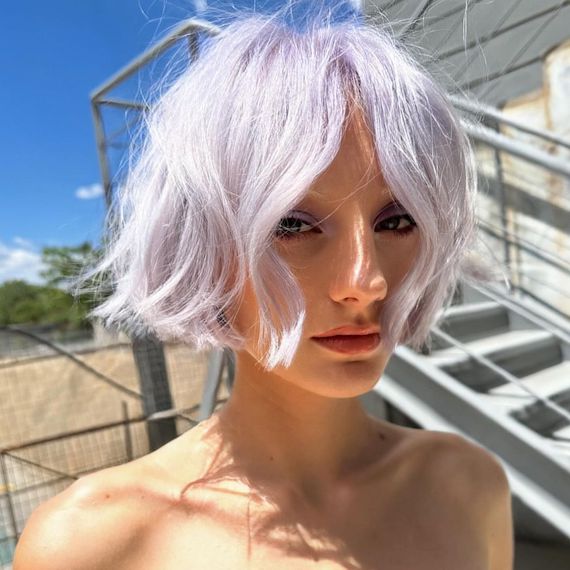
Image Credit: @ryf_eppendorf | @jhair_stylist
3. Apply a Leave-In Treatment
Sun-damaged hair needs prolonged care, which is where a leave-in treatment comes in. Even after your conditioner or mask has rinsed away, a no-rinse formula will continue to smooth and nourish damaged hair. ULTIMATE REPAIR Miracle Hair Rescue takes this one step further with an innovative skincare-inspired blend of ingredients, featuring AHA to replenish the bonds within brittle hair, and Omega-9 to condition the outer layer. The result: hair damage is repaired in 90 seconds*, leaving locks 12x smoother** with 99% less breakage***.
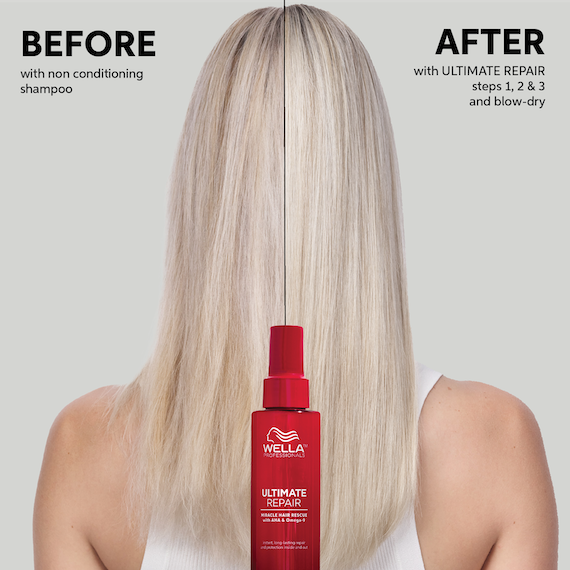
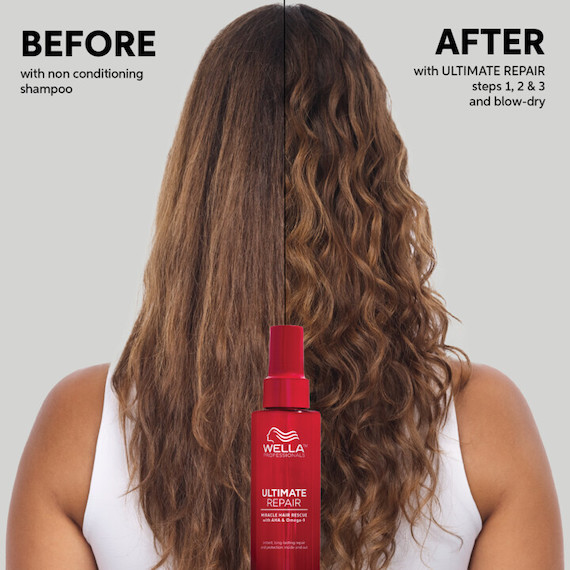
4. Turn Down the Heat
When hair is already suffering from the stresses of heat outside, reduce heat styling as much as possible so strands have the chance to recover. If you still want to use your heat tools, a heat protection spray or serum is essential in your kit. Try ULTIMATE REPAIR Protective Leave-In , a delicate cream that smooths down frizz while shielding locks from heat up to 230°C/450° F. And don't forget: if your straighteners or curling iron have a temperature dial, you can turn it down to avoid scorching strands. The ideal temperature is 120-150°C/250-300°F for fine or damaged hair, 150-180°C/300-350°F for medium or wavy hair or 180-200°C/350-390°F for thick or curly hair.
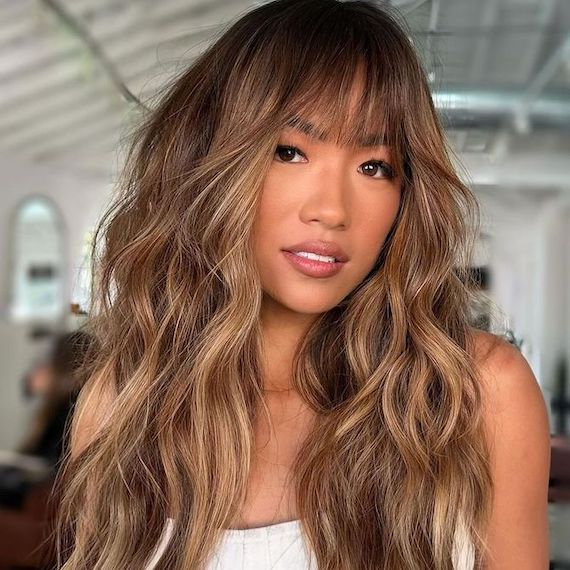
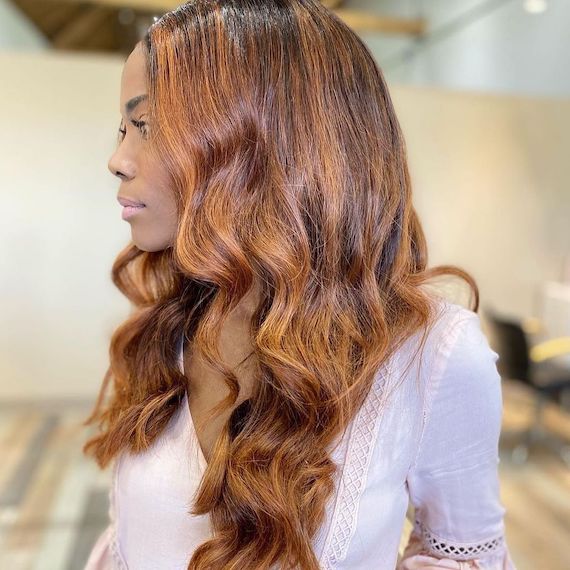
Image Credit: @danielmbeauty | @nicolerevish
5. Reduce Friction and Tension
When the sun strips the lipid layer of hair – the part responsible for minimising moisture loss – even everyday styling can put pressure on vulnerable strands. Without that layer of defence, combing, brushing and tying your hair in a bun or ponytail may prove too damaging. That's why a 'softly, softly' approach is key to reducing tension.
The first routine tweak involves gentle detangling. Instead of raking your comb from root to tip, start at the ends of the hair and work through knots in small sections at a time. This will prevent hair from becoming matted and will mean you're not tearing at ravaged ends. To help your comb glide through a little easier, apply a drop of Oil Reflections Luminous Smoothing Oil first.
Then, switch up your styling accessories. Swap elastics for silk scrunchies and hair ties, which let you work your favourite looks without rubbing against already-fragile hair. This is also the time to upgrade your bed linen. Try sleeping on a silk pillowcase, which will reduce overnight damage to hair – especially if you tend to toss and turn in your sleep.
6. Get Regular Trims
Stay on top of your salon cuts every six to eight weeks to remove split ends. If you're growing hair out, ask your hairstylist for a micro trim, which targets only the tips of hair and frayed flyaways while maintaining length.
7. Apply a Scalp Treatment
As well as your hair, the sun can have a big impact on scalp health. So, if the skin feels dry and tender after UV exposure, reach for a scalp treatment. INVIGO Scalp Balance Sensitive Mask is perfect, as it's packed with Allantoin to alleviate itchiness, while helping to nourish your scalp and strengthen your hair. It's also fragrance-free – ideal for irritated skin – and works in just five minutes to provide relief. Apply to clean, damp roots and lengths, allow it to absorb, and then rinse thoroughly.
Correcting Brassiness and Shade Fade
If summer sun exposure has turned your hair colour brassy, a salon is your first port of call. It takes the knowledge and skill of a professional to remove unwanted tones and correct colour without causing further damage. Head to our Salon Finder to discover your nearest Wella Professionals salon. Your hairdresser will be able to recommend a service that precisely targets your biggest colour concerns.
You can also try some at-home methods to enhance your salon services. If you have cool blonde hair, a purple shampoo is a staple in your kit – especially in the summer months. Try INVIGO Blonde Recharge Color Refreshing Shampoo , with violet pigments that neutralize yellow tones after sun exposure. Simply massage it into wet hair, leave it on for 2-3 minutes, and locks will appear refreshed.
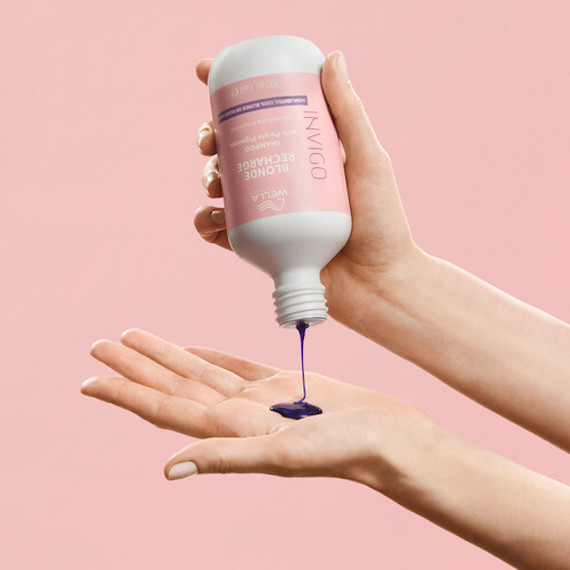
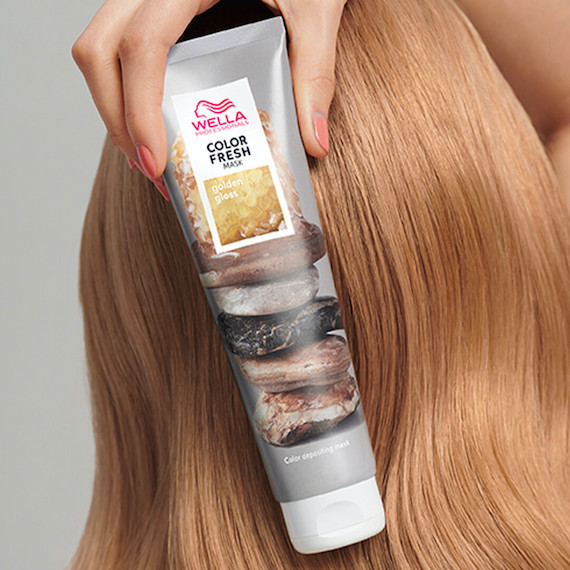
Or indulge faded locks with the Color Fresh Mask ; a colour-depositing treatment available in 13 shades. From cool blondes to rich brunettes to rainbow brights, it's easy to find a shade match that refreshes your colour in just 10 minutes. After shampooing, squeeze out excess water and comb your chosen mask through locks, then allow it to develop before rinsing thoroughly. Your colour will appear instantly brighter.
How to Protect Hair From UV Damage - 3 Key Preventative Measures
Prevention is as crucial as the cure, so as well as restoring scorched locks, it's important to protect hair from sun damage with the following three golden rules:
1. Apply a Hair Sunscreen
Like sun protection for your hair, INVIGO Sun Care Leave-In Spray wards off UV hair damage, so you can enjoy the sunshine with total confidence. Mist it through damp or dry hair before you head outside, and comb so that it shields locks from roots to ends. It’s a wonderfully weightless sunscreen for locks, so you can top it up throughout the day without dragging strands down.
2. Don't Forget Your Scalp
Your scalp needs protection, too, to reduce damage to your skin and hair follicles. For this, use a skin SPF and apply it to your hair parting and anywhere else on your scalp that might be exposed. Go for an ultra-thin formula, so it doesn't make the roots of your hair feel oily and use your fingertips or a cotton bud to apply it precisely where you need it.
3. Cover Up When You Can
On the hottest days, get an extra layer of protection with a wide-brimmed hat. It will cover your scalp and shield your lengths, so you can keep signs of sun-scorched hair at bay. A silk hair wrap or scarf is also perfect for tucking fragile strands away. Plus, you can apply a leave-in conditioner before you wrap hair, and let it absorb while you're out in the sun.
Hitting the pool? Now you've got all the expert tips you need to treat a sun-damaged scalp and hair, find out how to protect locks from chlorinated pool water. Summer stresses will be far behind you!
* When using ULTIMATE REPAIR Miracle Hair Rescue.
**Vs. non-conditioning Shampoo.
*** When using ULTIMATE REPAIR Miracle Hair Rescue instrumental test vs. non-conditioning Shampoo.


